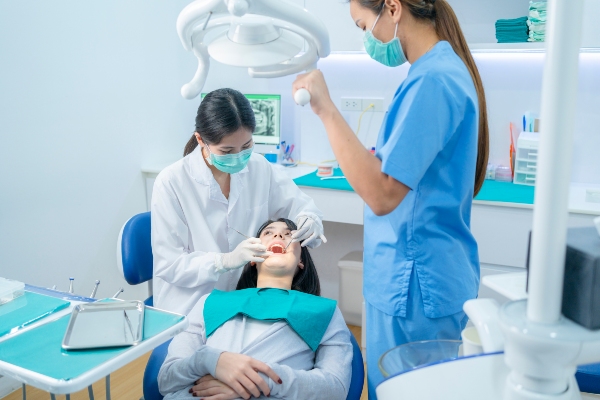How Implants Can Be Used in Cosmetic Dentistry to Replace Teeth

Cosmetic dentistry uses treatments like dental implants, bridges and dentures to replace missing teeth. Implants are often viewed as the best way to replace missing teeth since they are the only restoration that replaces the root of the lost tooth.
It is a huge deal since the root is responsible for keeping a person's jaw healthy. People with missing teeth often experience jawbone tissue breakdown as the area of the jaw that anchored down the lost tooth is no longer being used. Just like muscles need stimulation to stay healthy, the same holds for bone tissues. The breakdown of jawbone tissue leads to changes to a person's facial appearance like the formation of wrinkles and fine lines.
How implants are used in cosmetic dentistry
Implants are surgically inserted into a person's jaw, so they need to be healthy enough to recover from the procedure. The dentist will evaluate the patient before the treatment to determine if they are eligible for it. People who have health conditions like weak immune systems or diabetes are typically not good candidates for implants since their ability to recover is limited. Habits like smoking and drinking can also limit a person's ability to heal after surgery. Those who partake in either of these should consider taking a break before and after their surgery.
The dentist will also evaluate the patient's jawbone to ensure it is healthy enough to hold an implant in place. Not having the needed bone tissue does not automatically make a patient ineligible for implants. Bone grafts can be performed to give the patient the bone density they need for implants. The patient will need to be fully recovered from their bone graft before proceeding with implants. This can take up to six months.
The process
The installation of implants typically requires at least two trips to the dentist. During the first procedure, a hole is drilled into the patient's jaw and the implant is pushed into it. The dentist might have to make an incision into the patient's gums to reach the implants. Any incision made is closed up to end the first procedure.
For the next six months, the implant will fuse with the bone tissues keeping it in place via a process called osseointegration. It turns the implant into a part of the patient's jaw, providing excellent stability for a crown or some other restoration. Once the implant has fused in place, a crown, bridges or dentures are attached to it. An abutment might be used to serve as a connector. The process of getting implants can take up to six months from start to finish. Implants come with benefits like:
- Looks and feels like real teeth
- No special cleaning needed
- Can last a lifetime
- Restores the function of lost teeth
- Preserves bone tissue
Replace your missing teeth with implants
Call or visit our Hemet clinic to learn more about how implants can be used to replace missing teeth and if it is the best option for you.
Request an appointment here: https://hemetdentalcenter.com or call Hemet Dental Center: Brian Stiewel DDS, INC. at (951) 707-4366 for an appointment in our Hemet office.
Check out what others are saying about our services on Yelp: Read our Yelp reviews.
Recent Posts
Tooth extraction is a common dental procedure that general dentists perform on a regular basis. Although it is a routine and safe method, there are common misconceptions about it that cause unnecessary anxiety and fear. It is normal to feel a little nervous before any medical procedure, but it is equally important not to let…
Tooth extraction can relieve pain and discomfort, remove immediate threats to oral health, and open the door to more functional tooth replacements. While we strive to preserve your natural teeth for as long as possible, sometimes extractions are necessary. With the help of a general dentist, learn why there is no need to fear having…
When you hear you need a tooth extraction, it is common to worry about having a gap in your smile for the rest of your life. Fortunately, a general dentist can provide a tooth replacement to restore your smile. From dental implants to flipper teeth, there are many replacement options after a tooth extraction.Tooth extraction…
Many conditions can result in a tooth extraction, all of which boil down to the state of the tooth. There are two main types: simple and surgical. Take a closer look at each option and why we may recommend them.The goal of any general dentist is to preserve the natural teeth for as long as…


